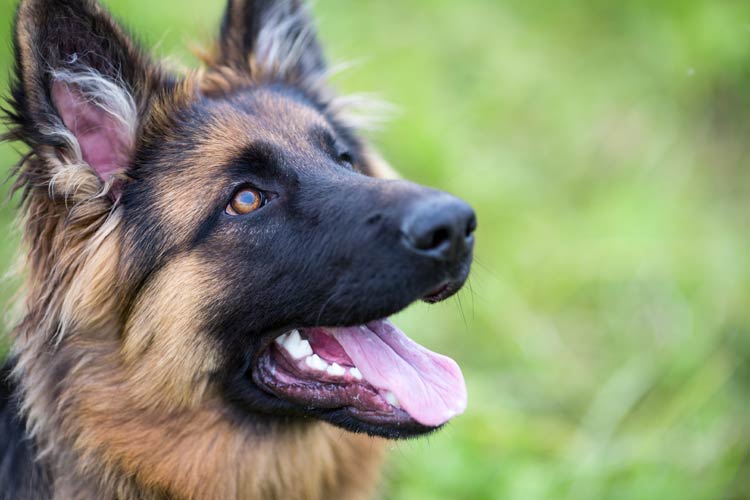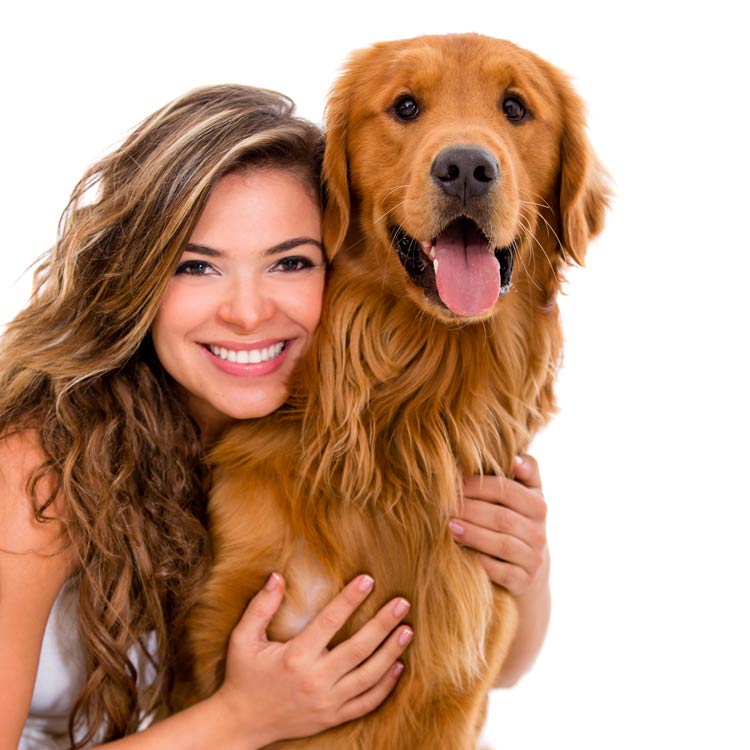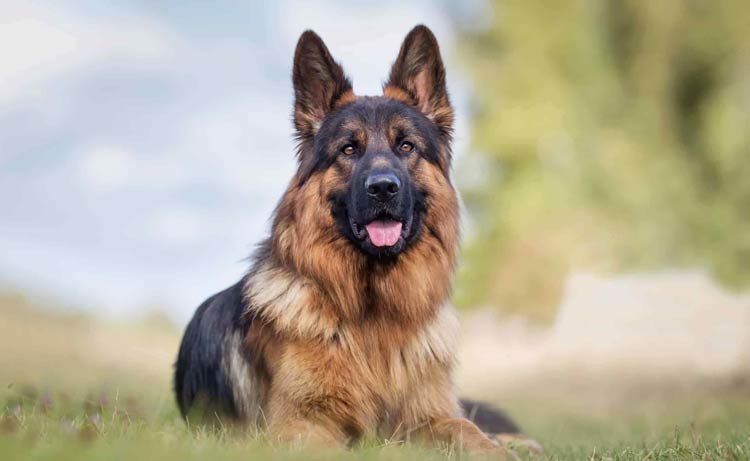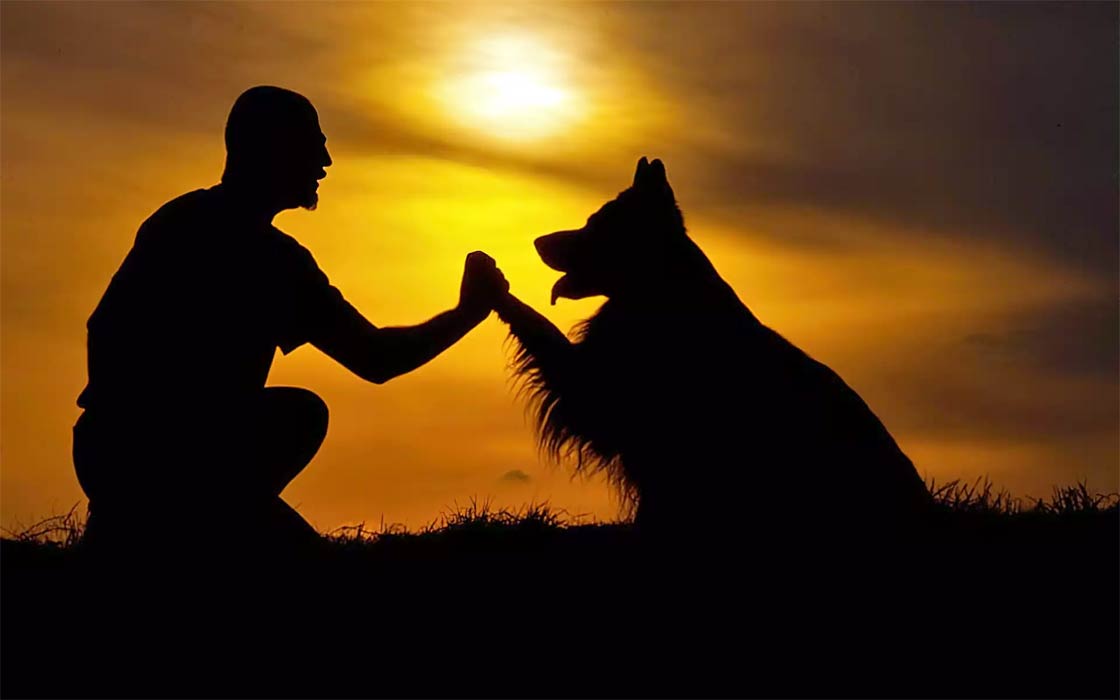Thousands of Years at Humanity’s Side: The History of Canine Empathy
Unique Bond Between Humans and Dogs
Dogs have accompanied us for centuries – guarding homes, aiding in hunts, and sometimes simply lying beside us, as if sensing we need companionship. Their ability to understand human gestures, emotions, and words seems almost supernatural. No other animal – not a cat, a horse, or even a chimpanzee – has achieved such a level of understanding with humans. Where did this unique bond originate? Science indicates that it’s the result of a long evolution, in which dogs and humans mutually changed. Let’s delve into the research that uncovers the secrets of this relationship.

Beginnings: From Wolf to Dog
The history of dogs begins with wolves (Canis lupus), their wild ancestors. Domestication started between 20,000 and 40,000 years ago – the exact date is still a subject of debate among scientists. One hypothesis, supported by genetic research from 2016 published in Nature, suggests that this process may have occurred simultaneously in Europe and East Asia. Wolves that approached human settlements in search of food scraps had to be less aggressive and more curious. These traits favored their survival – humans tolerated them, and over time, began to consciously select friendly and helpful individuals. This is how Canis familiaris, the domestic dog, came into being.
Fun Fact: DNA analysis of the oldest known dog remains, found in Germany and dated to 14,000 years ago, showed that they already differed from wolves in smaller size and probably a gentler disposition.

Key to Success
Social Intelligence
One of the groundbreaking studies in this field was Brian Hare’s experiment from Duke University, conducted in 2002. Hare compared the ability of dogs, wolves, and chimpanzees to read human cues – in this case, pointing to the location where food was hidden. Dogs, even puppies without prior training, performed exceptionally well, while wolves and chimpanzees required many attempts and often still failed. Moreover, dogs instinctively sought eye contact with humans when they didn’t know the answer – wolves did not.
In 2013, a Hungarian team led by Ádám Miklósi from Eötvös Loránd University went a step further. Researchers observed that dogs can distinguish human intentions based on subtle signals, such as gaze direction or tone of voice. In one test, dogs were more likely to approach a person who looked at them with a smile, ignoring the one who looked away. This is evidence that dogs not only respond to commands but also “read” our emotions.

Evolution of Eyes and Emotions
Physical changes also played a role in this bond. In 2019, a team from the University of Portsmouth, led by Juliane Kaminski, published an anatomical analysis in the Proceedings of the National Academy of Sciences. It turned out that dogs developed muscles around their eyes (the so-called levator anguli oculi medialis muscle), which are absent in wolves. Thanks to this, they can create a facial expression resembling human “sad eyes” – raised inner edges of the eyebrows trigger a caregiving reflex in us. In an experiment, dogs with a more expressive gaze were adopted from shelters faster than others.
Fun Fact: This trait is not equally present in all breeds – for example, Siberian huskies, genetically closer to wolves, have less developed muscles compared to Labrador retrievers or golden retrievers.

Chemistry of Bonding
Oxytocin in Action
The biology of the bond between dogs and humans is based on hormones. In 2015, Japanese scientists from Azabu University, led by Takefumi Kikusui, measured the level of oxytocin – the so-called “love hormone” – in dogs and their owners during eye contact. The results, published in Science, were astounding: after a few minutes of gazing into each other’s eyes, the oxytocin level increased by several dozen percent in both. Interestingly, when the experiment was repeated with wolves raised by humans, the effect was minimal. Dogs, therefore, seem genetically predisposed to this hormonal “dialogue.”
In another study from 2021, conducted by the University of Lincoln, it was found that dogs also produce more oxytocin in response to the friendly tone of their owner’s voice, which further enhances their sensitivity to our emotions.

Dogs vs. Other Animals
What Sets Them Apart?
Why haven’t cats, horses, or pigs reached a similar level? Cats (Felis catus) were domesticated about 9,000 years ago as solitary rodent hunters, and their relationship with humans never required such close cooperation. Studies from 2019 (Current Biology) have shown that cats respond to their names and recognize their owner’s emotions, but rarely seek help from them in solving problems – unlike dogs.
Horses, on the other hand, domesticated about 5,500 years ago, were bred mainly for work and transportation. Although they can read human gestures (e.g., pointing), their bond with humans is more utilitarian. Dogs, however, evolved as companions and partners – from hunting to guarding herds – which required constant interaction and communication.
Fun Fact: In comparative experiments, pigs turned out to be surprisingly intelligent and capable of reading gestures, but their domestication focused on food production rather than cooperation, which limited the development of their social bond with humans.

Modern Research
Dogs as a Mirror of Humans
Technology has allowed us to peer even deeper into canine minds. In 2016, Attila Andics’ team from Eötvös Loránd University in Budapest used functional magnetic resonance imaging (fMRI) to study the brain activity of dogs listening to human speech. The results, published in Science, showed that dogs process words and intonation in two different brain regions – similar to humans. 2 Moreover, they responded more strongly to praise spoken in a joyful tone (e.g., “good dog!”) than a neutral one, suggesting that they understand not only the content but also the emotions.
In 2022, researchers from Emory University in Atlanta discovered that dogs recognize the familiar scents of their owners in a way that activates brain areas associated with memory and reward – further evidence of a deep emotional bond.
Friendship Written in Genes
Dogs understand us better than other animals because their evolution has been inextricably linked with ours. From gentle wolves, through hunting companions, to modern pets – each stage strengthened their social abilities, physical adaptations, and biochemical synchronization with humans. Scientific research continues to uncover new layers of this relationship, but one thing is certain: dogs don’t just listen to us – they feel us. Perhaps, then, this friendship reflects more than just a shared history – perhaps it’s a mirror in which we see ourselves?



















